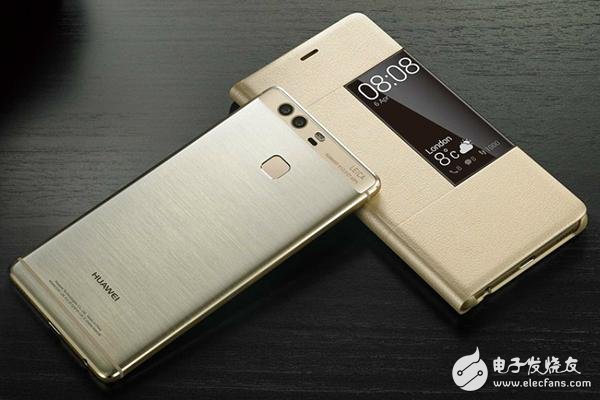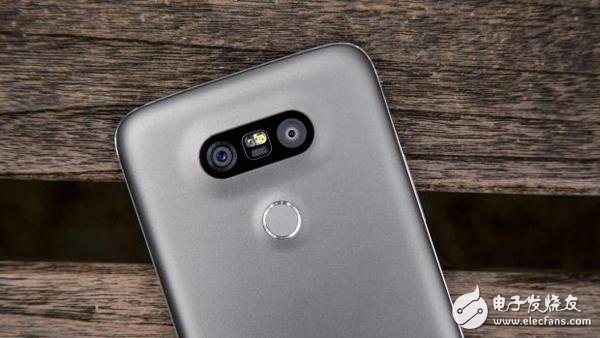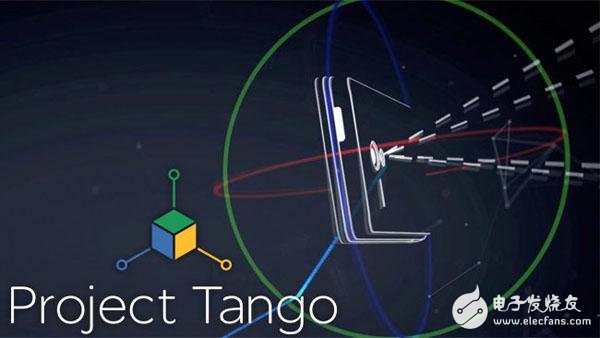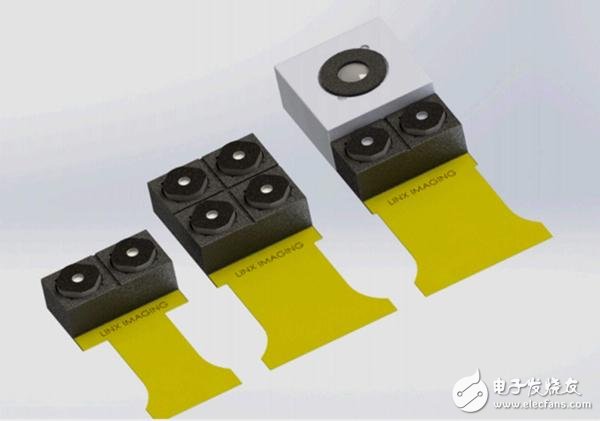What is the real need for a two-lens phone?
This year, we once again saw a phased outbreak of dual-lens phones. Two-lens mobile phones including LG G5, Huawei P9 and Red Rice Pro have entered the market one after another. Even more reliable news that Apple is about to join the two-shot camp. Today, blindly improving the gradual failure of the shooting pixels, the dual lens began to shoulder the responsibility of mobile phone shooting innovation.
In fact, we have heard about the technology of double lens. We must know that it is nothing new. Since 2011, we have seen the double lens from the digital camera field to the smartphone. You may be wondering, after several years of technical upgrades, has the twin lens got rid of the blame that is more than actual? Before answering this question, let's talk about the detours that the twin lenses have traveled.
Twin lenses have long existed, only to be too young at the time
To say that the originator of the dual lens is also due to the field of digital cameras. As early as 10 years ago, Kodak introduced a dual-lens camera called the V570. At that time, the dual lens of this camera was not high-tech, and the sub-lens was mainly used to achieve wide-angle shooting.

After three years, digital camera manufacturers who frequently suffered from mobile phone shocks once again bet on dual cameras. More famous is Fuji's 3D shooting dual-lens digital camera W1. Photographs taken with dual lenses can be viewed through 3D glasses.
It seems that it has been affected by the dual-lens technology of digital cameras. Since 2011, mobile phone manufacturers in the high-speed development period have begun to introduce dual-lens design ideas. Earlier, the Sharp SH8158U, HTC EVO 3D, LG OpTImus 3D, etc. The biggest selling point of these three mobile phones is equipped with a lens that can shoot naked-eye 3D photos, and then a large number of domestic mobile phones began to try naked-eye 3D technology.
There were several fatal factors that restricted the development of naked-eye 3D mobile phones at the time. First of all, the effect of naked-eye 3D is very bad, the stereoscopic effect of the photo is not real, and it will cause dizziness when viewed from different angles. On the other hand, the support of related applications is very limited. Users can only buy these products and watch photos on their mobile phones just like watching stereo cards. Others are almost useless. And the naked-eye 3D mobile phone at the time had a common problem and the price was too high.
In the next two years, the dual-lens mobile phone once again fell into a crisis of confidence. Until 2014, the unfortunate HTC brought the twin lenses back again and assembled them on the most flagship model, the HTC One M8.
Compared with the wide-angle, naked-eye 3D technology, the HTC One M8 is more interesting. Its rear lens is the famous 400W pixel UltraPixel rear lens at the time, and the auxiliary lens is a 200W pixel depth of field lens.
With the help of software algorithms, this depth of field lens can achieve the effect of taking photos first and then focusing. Although the application scene is more abundant, HTC ignores the low image quality caused by the low pixel of UltraPixel, which eventually causes the dual-lens mobile phone to encounter another cold winter.
With so many double shots, who is what you need?
On the surface, the two-lens mobile phones seem to be the same, but in fact the technical principles between them are very different, mainly divided into the following seven categories.
1, naked eye 3D
At first, Sharp, HTC, and LG developed a naked-eye 3D mobile phone. Capture 3D photos or videos directly from two shots of the same pixel so you can see the effect on a screen that supports naked-eye 3D display.
2, depth of field assistance

HTC One M8 and ZTE AXON and Red Rice Pro are representative models of this type of technology. In general, the secondary lens has a lower pixel size and is used to record depth of field information without directly affecting the quality of the shot. When shooting a sample, the dual shots work together, and a more free background blur can be achieved by means of photo synthesis.
3, bionic parallel
Stepping into 2014, when domestic mobile phones were undergoing a period of innovation, the dual cameras became the "killer" for them to compete in the high-end market. Coolpad and Glory have launched the Cool Platinum and Glory 6 Plus with dual lenses. These products are different from the depth-of-field auxiliary dual-camera. The dual rear lens also has the corresponding CMOS for taking higher-pixel photos, so it is called Arranged in parallel for bionics.
Technically, this type of dual-lens mobile phone has a larger amount of light and a light-sensing area, and can also be used for focusing, focusing, and virtual aperture adjustment. However, this is also more demanding for later software synthesis algorithms.
4, color black and white

On the basis of parallel double-shot, this year we are welcoming color + black and white dual-lens. Representative products are still domestic models, such as Huawei P9, Qi Cool Ultimate, and Glory 8. Generally, the main lens will be equipped with a color sensor, and the sub-lens will be a black and white sensor with the same pixel. When shooting, the dual lens can work together to synthesize photos, the color lens collects the image color, and the black and white lens complements the image brightness and detail.
5, wide-angle assist

The dual lens can also be used in wide-angle shooting, and the representative product is the LG G5. Although it has a dual lens, the shooting part is more dependent on the main lens. The auxiliary lens is an option for wide-angle lens, suitable for shooting wide scenes outdoors. These two lenses cannot be used to improve image quality at the same time, but are used separately.
6, optical zoom
Corephotonic has previously demonstrated an alternative dual-lens prototype that can simultaneously capture distant and close-up shots with different focal lengths of the lens, ultimately relying on software algorithms to achieve similar effects to optical zoom. Corephotonic refers to this type of camera as a "computing camera" that allows photos to have higher resolution while also reducing noise in low light conditions. It is a pity that there is currently no corresponding product equipped with this dual lens technology.
7, augmented reality

Not long ago, Lenovo released the black technology product Phab 2 Pro. The biggest feature of this machine is that it is equipped with three lenses. The main lens is used to capture the picture, and the sub-lens is composed of a wide-angle lens and a motion capture camera. Combining multiple lenses can achieve the effects of motion tracking, depth perception, and regional learning, which is our common AR augmented reality.
What you need to know is that the famous Google Project Tango is the technical support for Lenovo. Its dual lens is not meant to improve the quality of the shooting, more to achieve depth of field perception to measure, or to play augmented reality games like Pokemon Go.
Why is the twin lens so hot this year?

I really don’t know, I’m scared, and the original dual-lens expression is so diverse. It's just not the same as many people think. The dual lens is not all for the sake of improving the quality of the image. The other idea is the front-end mobile application extension field, which greatly enriches the use of the dual lens, allowing users to rely on The camera does more things that a single lens can't do.
Of course, the reason why the double lens is more popular than the old technology of mobile payment, fingerprint recognition and so on, is the emergence of the Apple giant.
Apple has already prepared for the dual-lens field. They have acquired Linx from Israel's imaging technology company. The company is best at making multi-lens mobile imaging cameras. The most intuitive effect is to improve image quality and focus speed. Even with optical zoom, the Linx dual lens is more versatile than the twin lenses that have been introduced.

In view of the current multi-channel exposure of the iPhone 7 real model, the higher specification of the iPhone 7 Plus is likely to use a parallel dual lens, which is said to be a combination of a wide-angle lens and an optical zoom lens. Shooting imaging, as to how much the actual picture quality can be improved, seems to be the only suspense that this double lens has left us.
You know that Apple has always been unprepared, just as they have led the market in large-size screens, retina screens, 2.5D curved glass, fingerprint recognition modules, and even local gold, rose gold, metal bodies, etc., every time. This has triggered the industry's crazy follow-up, this time Apple will really give the iPhone 7 Plus a dual lens, which will be the biggest innovation of this model. The far-reaching significance is that it will become the vane of many Android phone manufacturers.
The two major challenges facing the dual lens

Although the dual lens has more confident technical support than five years ago, there are still some shortcomings.
The dual lens should rely on improving the image quality. Under the premise of changing the image quality, the consumer can realize the effect of the double lens and should not be the marketing of Shantou. However, looking at the dual-lens that is currently on the market, although the amount of light and noise control has been slightly improved, but through our actual comparative evaluation, this improvement is not a qualitative change.
Followed by software optimization and application scenarios. The dual-lens mobile phone can basically use the variable electronic aperture to achieve the blurring effect of the first camera after focusing, but more is based on software to optimize the picture quality. When we evaluated this type of model, we found that they were more or less unoptimized and eventually caused distortion in the sample itself.
The other is the problem of the application scenario. Nowadays, the shooting function that can be adapted to the dual lens is not too much. We are only familiar with the first camera focus, black and white sample shooting, large wide-angle shooting, etc. As for the AR lens models, the corresponding augmented reality applications and The game is also poor.
Finally, the price issue. Previously, the dual lens technology will appear on the flagship model, attracting consumers' attention through the selling point of the dual lens, which is obviously not conducive to the popularity of dual lens technology. However, this week, this trend has been broken by the Cool1 released by LeTV and Cool, and the starting price of only 1099 yuan has lowered the entry threshold of the dual lens.
As Vice President of Corephotonics said: “Supply chain manufacturers have not had the ability to modify dual lenses in the past few years. However, after a few years, both the development of components and the relative maturity of the supply chain have accelerated the development of the industry. The challenges of lens manufacturing and application processing frameworks have been overcome."
In fact, it is like a fingerprint identification module. From the initial appearance of the flagship model such as the iPhone 5s to the later 100-yuan Android fingerprint mobile phone, the dual lens seems to be on the same path, and its cost can be A short test will determine its fate in the short term.
But dialectical analysis, this is not all good. In the future, we may see a variety of Shantou products with double-camera flags emerging. Is it necessary to "concept marketing" or "real learning?" There are naturally many in the eyes of consumers.
The development of dual-lens mobile phones has been undergoing an alternating transition from peak to trough. What is certain is that this year will be a year of re-emergence of dual-lens mobile phones. The relatively mature technology development, strong support from industry giants, developers and supply chain manufacturers will drive the adoption of dual-lens mobile phones more rapidly. Of course, we must also think rationally. The essence of dual lens is to improve the user's shooting experience. If the manufacturer only uses this selling point to attract users and can not bring substantial improvement, then the final encounter may be another low tide of the dual-lens mobile phone.
OEM Li-ion Polymer 3.82v 1715mAh iPhone 6S Battery Pack as original 1:1, iPhone Customized Cell with new 0 cycle, temperature-resistant, High rate discharge, High energy density. iPhone Customized FPC, Pressure resistance, bending resistance, good flexibility. iPhone Repair Battery daily production 100-150,000pcs, refective rate below 3‰.
iPhone 6S Battery Pack
Nominal voltage: 3.82V
Limited charge voltage: 4.35V
Capacity:2915mAh (11.1whr)
Cell size: 33x48x119mm
iPhone 6S Battery Pack,iPhone 6S Battery Pack Replacement,Battery Pack For iPhone 6S,iPhone 6S Lithium-Ion Battery
Shenzhen Aokal Technology Co., Ltd. , https://www.aokals.com